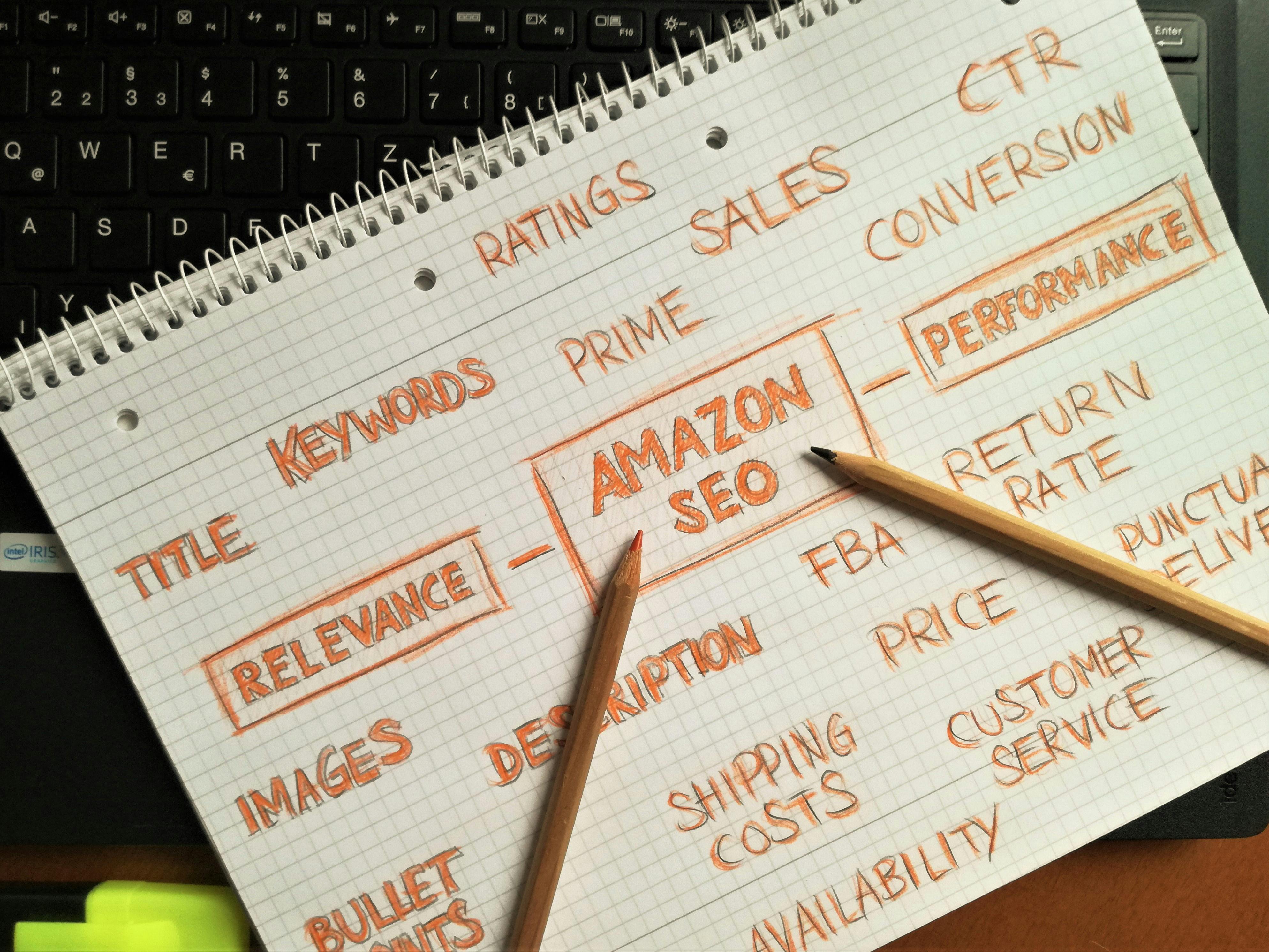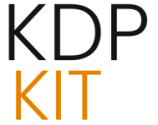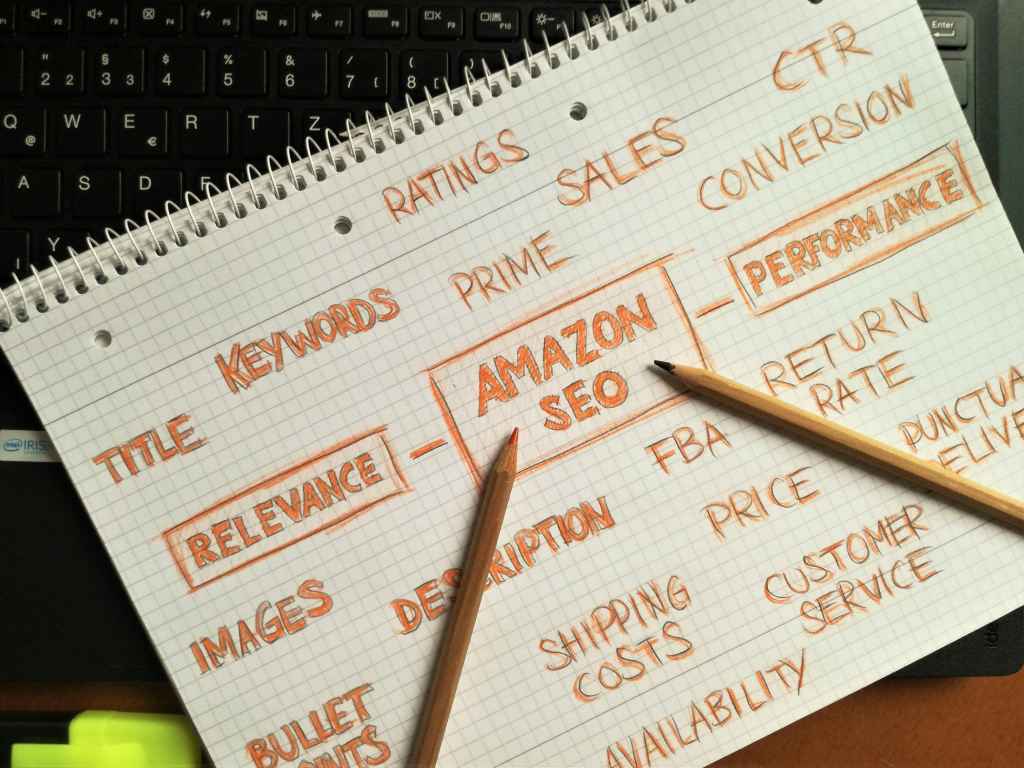
Deconstructing the Kindle Ebook Royalty Structure: Sizing Up the Digital Delivery Fee Dilemma
Let’s start with the digital realm, where the structure has remained functionally the same, yet the strategic choice for authors has never been more critical. The Kindle eBook royalty model remains bifurcated, offering you a choice between a standard thirty-five percent (35%) royalty or the more attractive seventy percent (70%) option. This choice is the first, most basic financial decision you make for every digital file.
The allure is clear: the 70% tier is where the real per-sale revenue lies, but it comes with a condition, a necessary trade-off for that higher rate. This option is only available for books priced within a specific, sweet-spot range, typically between two dollars and ninety-nine cents ($2.99) and nine dollars and ninety-nine cents ($9.99) in the primary marketplaces like Amazon.com. The price of entry for this better percentage? The application of an eBook delivery fee. This fee is calculated based on the final digital file size, often charged at a rate of fifteen cents ($0.15) per megabyte (MB) for sales within eligible territories. For a hefty, illustrated non-fiction title that balloons to, say, 8 MB, that fee hits you at $1.20 per sale—a real chunk out of your potential profit.
The File Size vs. Price Point Trade-Off
This dynamic creates a complex calculus for authors, particularly those in genres heavy on images or embedded data. Imagine you have a stunningly illustrated cookbook, clocking in at 10 MB. If you price it at $7.99 to get the 70% royalty, you are subject to the delivery fee. That fee, depending on the territory, can seriously erode your margin, potentially making the 35% tier the smarter financial move—even though the percentage is lower. Why? Because the 35% tier, applicable to ebooks priced *below* $2.99 or *above* $9.99, completely waives this digital delivery charge.
This makes the 35% option the financially savvy choice for exceptionally large files—think comprehensive technical guides, art books, or massive fantasy novels with appendices—where the delivery fee would otherwise consume the margin gained by choosing the 70% rate. Authors must strategically crunch the numbers: file size against price point to optimize their take-home revenue per digital sale. Don’t just default to 70%; calculate the absolute net revenue for both scenarios. This initial dive into digital optimization is the first step toward mastering your entire KDP ebook optimization guide.
Analyzing the Print Royalty Tier Shift: Staying Above the Sixty Percent Cutoff Line
If the ebook structure is a matter of nuance, the recent change to paperback and hardcover royalties is a straight-up financial overhaul that went live in June of Two Thousand Twenty-Five. This is the pivot point that demands your immediate attention for your print catalog.
Prior to this adjustment, a blanket sixty percent (60%) royalty was the standard for print books below a certain price threshold in most major marketplaces. The new structure introduces a tiered system, and it’s not subtle. Print books priced *below* a regional threshold—for example, below nine dollars and ninety-eight cents ($9.98 USD) in the US—now earn a reduced royalty rate of fifty percent (50%) of the list price, minus the manufacturing overhead. This is a direct, ten percent reduction in the royalty *share* for every lower-priced unit you sell. For authors who relied on volume from $5.99 or $7.99 paperbacks, this cut stings, translating to significantly lower per-unit income.
The Power of the Threshold: Maintaining the 60% Bracket
Crucially, the sixty percent (60%) royalty rate is retained for any print title priced *at or above* that established regional threshold. In the US, that means $9.99 USD is the magic number. In the UK, the equivalent threshold is £7.99, and in Canada, it’s CAD $13.98.. Find out more about KDP print royalty adjustment pricing strategy 2025.
This dynamic forces a stark, strategic decision for every single print title you have published:
- Option A: Accept Affordability. Keep the list price below the threshold (e.g., $8.99 USD) to maximize market accessibility, but accept the lower 50% royalty share.
- Option B: Chase the Margin. Increase the list price *to or above* the threshold (e.g., $9.99 USD or $10.99 USD) to lock in the higher 60% royalty rate, potentially sacrificing some unit volume in the process.
- Trim Size: A 5″x8″ book costs differently than a 7″x10″ book.
- Page Count: This is the most linear variable; more pages mean more cost.
- Ink Type: Black and white (B&W) is significantly cheaper than color.. Find out more about KDP print royalty adjustment pricing strategy 2025 guide.
- Amazon Marketplace: Logistics, paper sourcing, and labor costs differ globally, meaning a book printed in Germany has a different base cost than one printed in the US.
- The Book Description: This is your sales copy. It must be engaging, error-free, and clearly communicate the book’s core value proposition. Is this a gripping narrative, or a pragmatic problem-solver? Tell the reader immediately. Don’t use a bland summary; use persuasive language that earns the click-through.
- The Categories: You must select categories that *precisely* place the book within Amazon’s navigational hierarchy. Being in “Fiction/Thrillers” is too broad. Being in “Fiction/Thrillers/Psychological/Legal Thrillers” is where you find hungry readers browsing niche genres.
- The Keywords: The seven keyword slots are your search engine goldmine. They must capture relevant search terms readers *actually* use. This requires dedicated research using specialized tools to uncover high-traffic, relevant phrases that might not be obvious. Accuracy here directly correlates with your organic search placement—it is the difference between being on page one or page twenty. Mastering keyword research techniques is non-negotiable for visibility in 2025.
- Audit Your Print Titles: Immediately run a report on all paperback/hardcover titles priced under $9.99 USD (or local equivalents like £7.99/€9.99).
- Calculate the New 50% Net: For every affected title, plug the current printing cost into the KDP calculator using a 50% royalty rate. Does the net profit still justify the sale? If the royalty is near zero, you must act.
- Implement the Strategic Bump: For any title where the 50% royalty is unsustainable, raise the price by one cent—to $9.99 USD, £8.99 GBP, etc.—to immediately lock in the retained 60% rate. Remember, a one-cent increase to cross the threshold is often less impactful on sales volume than a 10% royalty hit.
- eBook File Check: Review the file sizes of your highest-selling ebooks priced between $2.99 and $9.99. If a file is over 5 MB, calculate if the delivery fee is costing you more than the extra margin of the 70% rate. If so, consider pricing it at $9.99 or $1.99 (to get 35%) to save on those recurring fees.
- Localize Foreign Prices: Log into your KDP dashboard and manually review the list prices for your top 5 international markets (UK, DE, CA, AU, JP). Ensure these prices have not been pushed into an undesirable royalty tier by automated currency conversion.
This isn’t a theoretical exercise. If your printing cost is high due to page count or color, pricing an $8.00 book that *used* to earn you $0.33 might now earn you literally zero dollars once the 50% rate is applied against that fixed printing cost. You are essentially being forced to perform advanced KDP pricing modeling just to break even on past successes.
Calculating Manufacturing Overhead: Deconstructing Print-On-Demand Production Expenses
For all print books, whether they earn 50% or 60%, the actual printing cost—the manufacturing overhead—is the absolute, non-negotiable baseline deduction from the potential royalty pool. You can never forget this denominator in the royalty equation.
This cost is far from static; it varies dynamically based on several factors that KDP calculates automatically upon upload:
KDP presents this variable cost to you for review. The royalty calculation is always performed *after* this deduction. The formula, now critically influenced by the new royalty tier, is:
(Royalty Rate × List Price) – Printing Cost = Author Royalty
The system uses these figures to suggest a non-negotiable minimum list price—the floor below which KDP simply won’t let you sell the book to avoid a net loss for you (or, rather, a net loss for *them* on the transaction, as you aren’t paying upfront). However, the recent royalty adjustment has lowered this safety net for lower-priced items, meaning that minimum list price has effectively risen for those 50% bracket titles.
The Silver Lining: Navigating Color Cost Reductions
Now, for a small piece of genuinely positive news amidst the structural change: a simultaneous, slight reduction in color printing costs in some territories. This is a welcome development, particularly for color-intensive works like children’s books, workbooks, or graphic novels. For instance, some marketplaces saw a minor drop in the per-page cost for standard color paperbacks. While this marginal saving won’t erase the impact of a 10% royalty cut on an $8.00 book, it does make the decision to price a complex, high-cost interior book at $9.99 (to hit the 60% tier) slightly less financially daunting. This nuance shows why simply raising the price by one cent isn’t always the panacea it seems—you must run the actual royalty calculator guide with your specific production specs.
Setting Minimums and Maximums: Adhering to Amazon’s Global Price Ceilings
Your pricing strategy lives within a cage—a set of absolute price limits imposed by the platform that vary by sales territory. Diligence here is key. You must respect not only the internal royalty tiers but also these external boundaries.
For example, on Amazon.com, the maximum list price for a print book is currently capped at two hundred and fifty US dollars ($250 USD), while the Canadian marketplace permits three hundred and fifty Canadian dollars ($350 CAD). These caps are usually high enough not to affect most authors, but for textbooks or niche reference works, they represent the absolute ceiling.
The Strategic Price Bump: Maximizing the 60% Window. Find out more about KDP print royalty adjustment pricing strategy 2025 tips.
The core strategy emerging from the 2025 shift is price anchoring above the new lower threshold. For authors in the UK, for instance, the goal is to price *above* the £7.99 mark to retain the 60% print royalty. This often involves rounding up to a perceived premium point—say, £8.99 or £9.99—even if the calculation suggests that £7.98 might cover costs and keep the price lower.
This balancing act is the central financial challenge today: perceived market value versus affordability versus the non-negotiable new royalty structure. If your competitor prices their similar-length book at $8.99 and earns 50% ($2.50 royalty on a $5.00 print cost), and you price yours at $9.99 and earn 60% ($3.00 royalty on that same $5.00 print cost), you’ve made a clear, strategic victory by earning 50 cents more per sale, even if you sell slightly fewer copies. This is the heart of modern KDP business acumen: understanding that your customer is often willing to pay a dollar more for a book that simultaneously ensures *you* continue to earn a sustainable income. You are, in effect, selling value, not just content.
The Upload and Review Protocol: Finalizing Your Book’s Metadata and Presentation
With the content finalized and the financial strategy locked in—you know where your prices need to be to maximize the 50% vs. 60% tiers—the next phase is the administrative data entry. This metadata is the primary tool for discoverability outside of any paid advertising you might employ. Get this wrong, and the best price in the world won’t matter because no one will see it.
Crafting Compelling Metadata: Keywords, Categories, and the Sales Pitch
The book’s product page hinges on three key textual elements you supply, which essentially function as your silent, 24/7 sales team:
Visual Branding: The Imperative of Professional Cover Art and Interior Design. Find out more about KDP print royalty adjustment pricing strategy 2025 strategies.
A book’s cover is its single most important marketing asset. It functions as the initial impression across thumbnail sizes on mobile devices—which is how most people browse—and the full-screen view on desktops. While KDP offers free design tools, the competitive nature of the modern market strongly suggests an investment in professional cover design. A poorly executed graphic immediately signals amateur quality to the discerning consumer. Think about it: would you rather buy a guide to investing with a cover that looks like it was made in 1998, or one that looks clean, modern, and signals expertise?
The cover must adhere to Amazon’s specific technical requirements for size and resolution for both ebook and print files. For print, the file must correctly integrate the front cover, the spine width (which is determined by page count and trim size), and the back cover into a single PDF template supplied by KDP. The overall visual identity—cover, title, and subtitle—must be cohesive and reflect the genre expectations while remaining distinct enough to stand out on that crowded digital shelf.
Distribution and Enrollment Choices: Optimizing Reach Through KDP Select and Expanded Territories
Once the book’s file and metadata are uploaded, you face a pivotal distribution decision that dictates your market reach and how you get paid for digital sales: KDP Select enrollment.
Evaluating the Kindle Unlimited Proposition Versus Wider Availability
Enrolling an eBook in the KDP Select program trades exclusivity for access to Amazon’s lending library programs: Kindle Unlimited (KU) and the Kindle Owners’ Lending Library. In KU, authors are compensated based on pages read, a model that heavily favors high-read-through content and can be extremely lucrative for prolific authors or those whose work perfectly fits subscription consumption patterns. As of September 2025, the KDP Global Fund was valued at $58.7 million, showing the sheer scale of money flowing through this system.
The major stipulation, the lock-in clause, is that the eBook must be exclusive to Amazon for the enrollment period—meaning it cannot be sold digitally on any other platform (Apple Books, Kobo, Google Play, etc.).
Authors who prefer maximum distribution across all digital storefronts must opt out of KDP Select. This forfeits KU revenue but maintains control over external sales channels, which is often the preferred path for niche non-fiction or authors with a strong existing audience on other platforms. The choice hinges on whether you believe your book will earn more from high-volume lending reads or from broader, external sales, a calculation that needs constant review given the shifting payout rates per page read.
Understanding Regional Pricing Variations and Automatic Currency Conversion Mechanics
When setting your list price, you can choose a primary price point and allow Amazon’s systems to automatically convert that into local currencies for all global marketplaces. This is convenient, but convenience can cost you money.. Find out more about KDP print royalty adjustment pricing strategy 2025 overview.
Automated conversion is often *not* optimized for your profit margin. Exchange rates fluctuate wildly, and local Value Added Tax (VAT) or Goods and Services Tax (GST) considerations can lead to unexpected results—sometimes pricing your book awkwardly high or, worse, accidentally dropping it *below* the new print royalty threshold in a foreign market due to an unfavorable exchange rate calculation. Savvy publishers, however, bypass this risk. They manually override the automatic conversion for key international territories—like Amazon.co.uk, Amazon.de, or Amazon.ca—to ensure their pricing aligns with local market expectations while strategically placing the price above or below the print royalty thresholds for the highest possible net gain. This oversight prevents awkward pricing and ensures you maximize the higher earning bracket wherever possible. Learning to manage international sales management is key to global success.
Post-Publication Velocity: Strategies for Driving Initial Sales Momentum and Visibility
The mere act of publishing is not the final step; it is merely the starting gun for the promotional race. In the hyper-competitive environment of 2025, a book requires active, calculated propulsion to move beyond the initial sales spike generated by your immediate network. Visibility is not granted; it must be earned through strategic action.
The Role of Author-Driven Promotion and Pre-Launch Buzz Generation
A successful launch is engineered well before the publication date. This involves the strategic distribution of Advanced Reader Copies (ARCs) to established reviewers, bloggers, and trusted early readers. Why? To ensure a critical mass of authentic reviews is available on launch day. Social proof is a conversion factor that algorithms respect deeply.
Furthermore, building an engaged email list remains the most reliable, non-algorithm-dependent marketing channel in your arsenal. Consistent communication with this audience about the book’s release, availability, and any special introductory pricing is crucial for generating the initial sales velocity required to signal relevance to Amazon’s internal discovery engines. Treat your email list like the high-value asset it is; they are your most dedicated customers and deserve consistent, valuable updates that go beyond a simple “buy my book” plea. For deeper strategies on this front, look into advanced author platform building guides.
Exploring Amazon’s Internal Advertising Ecosystem for Targeted Customer Acquisition
In the current climate, relying on organic discovery alone is often insufficient—it’s like waiting for customers to wander into your physical store without a sign out front. Authors must budget for and actively manage Amazon Advertising (Pay-Per-Click, or PPC) campaigns.
This system allows for highly targeted placement of advertisements both within Amazon search results and on the product detail pages of similar, competing books. Effective management involves continuous A/B testing of ad copy, meticulously monitoring your Advertising Cost of Sale (ACoS), and aggressively targeting those niche keywords identified during your metadata research phase. While benchmarks fluctuate, a well-managed campaign in the non-fiction space often aims for an ACoS that allows for a positive net return, or at least breaks even, given that a higher-priced book now secures a better royalty rate.
A modest, well-managed daily advertising budget, often starting in the range of fifty to one hundred US dollars per month across a small series, can provide the consistent sales flow necessary to maintain visibility and climb search rankings. This advertising acts as a vital fuel to complement the organic efforts made through your social media and list-building activities. For an objective look at the cost implications across different platforms, always reference transparent industry analyses [External Link: For an outside perspective on general KDP costs and financial planning, check out resources dedicated to Amazon KDP fees and royalties, which often track these fluctuating factors].
Sustaining the Author Enterprise: Monitoring Performance and Iterative Growth
The publishing lifecycle does not conclude once the initial marketing push subsides. A successful self-publishing career on KDP is characterized by continuous monitoring, analysis, and tactical adjustment based on real-world data. The 2025 royalty changes were a test; your sustained success depends on how well you respond to that test month after month.
Reviewing Sales Reports and Analyzing Marketplace Performance Data
You must routinely access the KDP dashboard’s reporting tools. Which marketplaces are driving the most profitable sales? Which pricing strategies are yielding the highest *net* revenue after the printing cost and the new royalty deductions? The reports detail sales by territory, format, and royalty type, providing clear evidence of where your marketing efforts should be refocused or where a price adjustment—especially in light of the print royalty shifts—is warranted.
For example, you might discover your $9.99 print book performs well in the US (earning 60%), but your $9.49 version in Germany (earning 50%) is actually costing you more time in management for less return. Understanding the difference between a high-volume, low-margin sale and a lower-volume, high-margin sale is critical for long-term financial modeling. This is where your business acumen truly separates the hobbyist from the professional author; the pros don’t guess, they analyze the sales data breakdown.
Iterative Content Strategy: Planning Sequels, Series, and Backlist Optimization
Long-term success on KDP is rarely achieved with a single title; it is built upon a calculated portfolio. The data gleaned from monitoring one book should directly inform the creation and marketing of the next. This includes planning sequels or companion books that can be launched directly to an already engaged readership—your book one readers are your best audience for book two. The data you gathered on which price points sold best becomes the blueprint for your next launch.
Equally important is going back to optimize your older titles (the “backlist”). You must revisit their metadata and ensure their pricing remains strategically placed above the crucial print royalty threshold. A book you priced at $7.99 two years ago might have been optimal then, but now, maintaining that price point means accepting a lower royalty rate. A strategic bump to $9.99 might be necessary to get back to the 60% band, even if it means sacrificing a few impulse buys for more sustainable, higher-margin sales. This iterative process is the engine of a self-publishing business.
The entire KDP process is cyclical: research informs creation, creation feeds into distribution, distribution generates data, and that data feeds back into smarter research and creation. This ensures the author enterprise remains agile and responsive to the ever-present evolution of the digital book retail environment. The dedication to mastering these steps ensures that the author remains firmly in control of their literary business in this competitive and rewarding domain. For a deeper dive into the continuous improvement cycle, review our strategies on continuous improvement for authors.
Actionable Takeaways: Your October 2025 Price Check List. Find out more about Calculating eBook delivery fees based on file size KDP insights information.
The complexity of the 2025 royalty changes demands a concrete to-do list. Don’t let this information wash over you; implement these steps today to secure your Q4 earnings.
Key Takeaways and Immediate Action Items:
The shift in June 2025 wasn’t just a change; it was a clear signal from the platform: low-priced inventory is no longer automatically profitable for the author. To thrive now, you must price your work with the same precision a seasoned CFO manages a portfolio. Your art deserves to be valued, and you now have the precise financial data required to enforce that valuation across every sale, every day.
What price point felt most difficult to adjust after the June 2025 changes? Share your biggest pricing hurdle in the comments below—let’s solve these post-pivot puzzles together.







